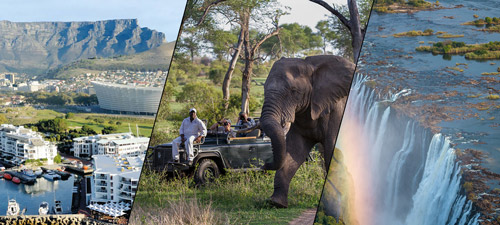
SOUND THE DRUMS FOR THE 'GULE WAMKULU'


In various parts of Malawi, Zambia and Mozambique, the spirits of the ancestors take on corporeal form and dance for their living descendants. Not just to entertain but also to inform, chastise and guide. The forms they take are varied and spectacular, and the occasion of their portrayal is called the gule wamkulu – the great dance.
I first saw the spirits dancing at a lakeshore hotel years ago. It was a spectacular piece of dinner theatre, and, of course, the dancers were paid performers, but it had a power and immediacy that I have not forgotten in over a decade. But there is much more to the gule than mere tourist entertainment.
The dancers prepare weeks in advance by carving masks and making the outfits in secret. These are not thought of as costumes but as actual spirits, each representing a character that fulfils a purpose or delivers a message. Uninitiated people may not see the masks, and the dancers must keep their identity secret, compartmentalising their daily lives from their parallel existence as spirit dancers. The outfits are stored in secret places, and the dancers change far from the village in the forest before making their way from the relative wilds to the civilisation of the village.
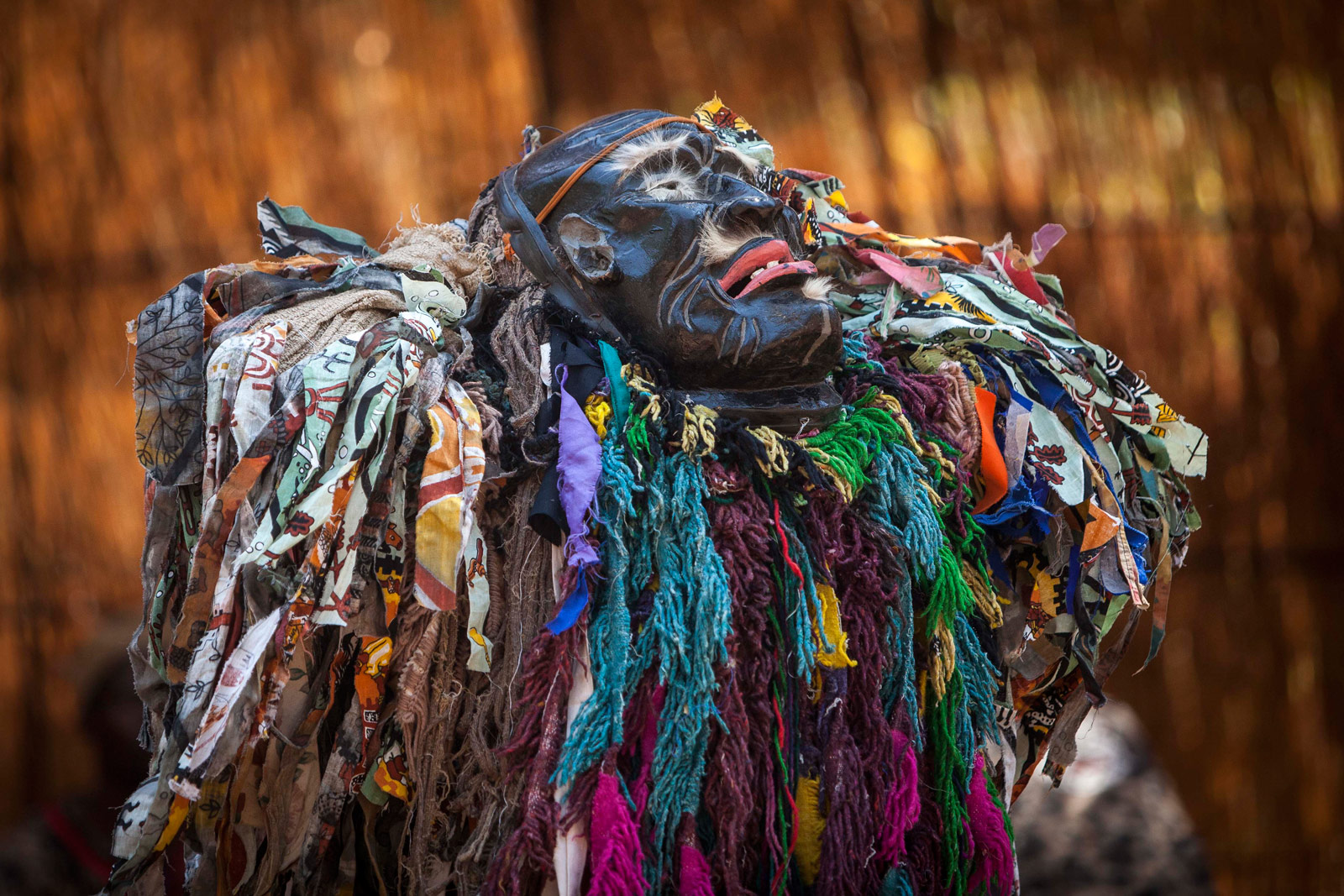
‘Gule wamkulu is a cosmic celebration of life and death,’ says Father Claude Boucher (Chisale) of Mua Mission. ‘It comments on and influences issues affecting society – materialism, dispossession and inequality – and reflects the rich cultural heritage of the Chewa people.’ The rituals, traditions, taboos and social etiquette portrayed by the gulu represent and document mwambo – the moral code laid down by the ancestors.
It wasn’t long before Father Claude started questioning the Church’s policy
It’s worth noting here that ancestor veneration, as practised by many African tribes, is not ancestor worship. The ancestors are respected, remembered and – when they have something important to communicate to their descendants – heeded but not worshipped. This common misconception may be one cause of the long-standing conflict between Christian missionaries and the gule wamkulu. The refusal to allow converts to take communion unless they relinquish all links to gule is one example. This situation greeted Father Claude when he arrived at Mua Mission in 1967. But it wasn’t long before he started questioning the Church’s policy of accepting other African traditional practices while demonising the gule. Questioning led to understanding; understanding led to acceptance, and acceptance led to his becoming initiated into the gule wamkulu. In the intervening years, he has documented over 400 gule characters and collected and preserved well over 200 masks.
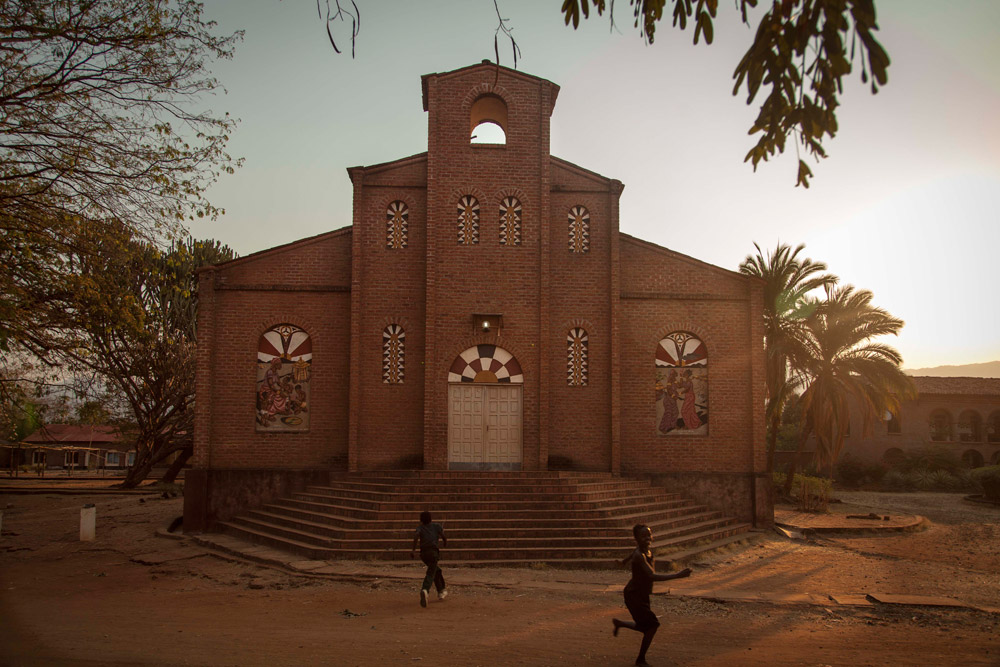

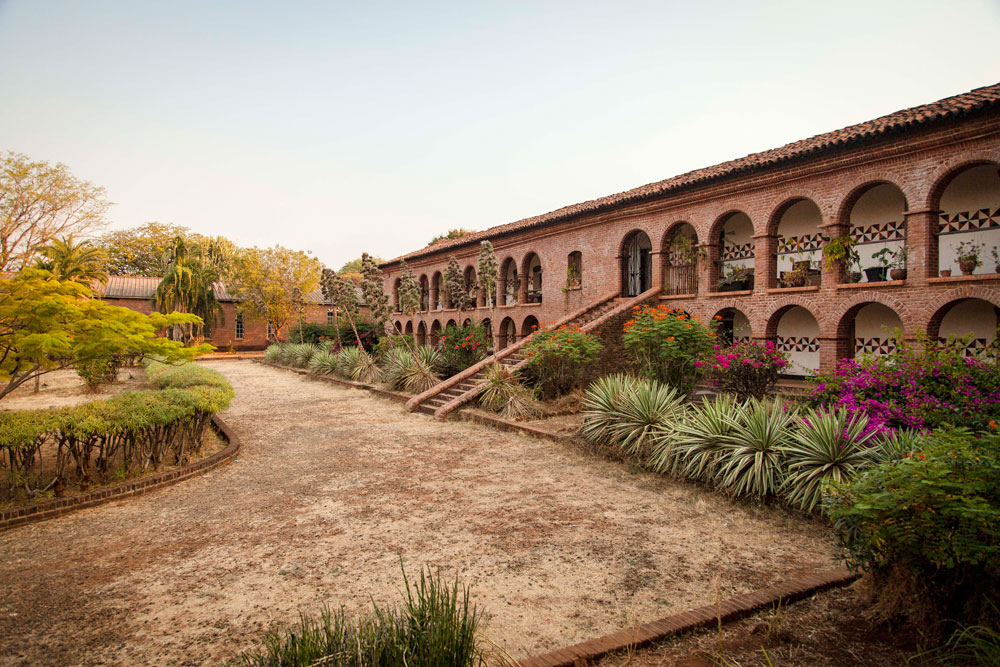
2. In some interpretations of Chewa spirituality, Mbona, the rain deity, often takes the form of a snake and speaks through his wife, Salima.
3. Father Claude Boucher (Chisale) has been initiated into the gule wamkulu and taken the name of the Chewa family, Chisale.
4. The abbey at Mua mission.
©Andrew Brukman
Keen to gain a deeper understanding of the gule and its significance, I visited Mua Mission. I’m not sure what my expectations were, but the reality vastly exceeded them. Beautiful brick buildings with spectacular sculptures and frescoes depict the history, culture and values of the local Chewa, Yao and Angoni people and that of the Catholic Church – and if you think combining all that into one harmonious whole is a tricky feat, you’re right. But somehow, they have. I chatted to Boucher in a vain attempt to understand in a day what he had taken four decades to internalise, and probably the most important thing I learned is that it is almost impossible for a verbal-dominant Westerner like myself to fully grasp the pre-literate symbolism of a society as old as the Chewa. But I think I have achieved a vague comprehension.
Superficially, gule dancers can take four basic forms. The oldest and most traditional is a naked man smeared with ash or mud – representing death – and wearing a mask. As norms changed, a loincloth was added, but the look remained the same. More recently, the ash or mud has been replaced by a full costume of tatters – long strips of colourful rags that symbolise the clothes of the dead. And then there are full costumes that consist of a solid structure that may be supported by one person or by two people as with Mkango the lion, made up in the familiar form of the pantomime horse. It is a bit scary, as it rushes around roaring, but it’s also kind of whimsical and quirky.
Two of the more recent forms are Barack Obama and Ebola
There are literally hundreds of forms or masks. Some are in the shape of animals, some are roughly humanoid, and some are bizarre and outlandish. What they have in common is that they are all deeply symbolic and can, in almost no instances, be taken literally. And new ones appear rapidly in response to changing situations – two of the more recent are Barack Obama and Ebola.
I watched a performance of the gule with Father Claude on hand to explain what was happening. The most important dancers are Chadzunda – the father of all the gule characters – and his wife Maliya or Mariya. Chadzunda’s mask is a fearsome black visage with wrinkles and missing teeth signifying his great age and wisdom. He limps into the Bwalo, but is revitalised when he starts dancing with his young and lovely wife. Mariya’s character has clearly been influenced by the missionary history of Malawi. She is represented as of European origin and is – strangely considering her Virgin Mary connections – sensual and seductive as she dances with Chadzunda. While it is true that the gule represents traditional conservatism, it does move with the times. Mariya’s dancing and devotion to Chadzunda represent both feminine submission and a protest against polygamy.



2. Mbaula allows people to make food on his burning head, but he uses his pseudo-generosity to impose obligations on others.
3. A wooden sculpture takes the form of the giver of life, Kasiya maliro. The intricate forms within depict Chewa rituals.
4. Chadzunda and his wife Maliya’s dance illustrates the sanctity of intramarital sex.
©Andrew Brukman
But possibly the most important, ancient and interesting mask is that of Kasiya maliro – Mariya’s animal counterpart. The name means “the one who accompanies the corpse to the graveyard,” but it is a symbol of life, not death. Kasiya maliro is represented by a stylised antelope, but that’s just there to hide her real nature from the children – and the uninitiated. The antelope is depicted as the tiniest head and tail on top of a huge inverted uterus and vulva. I didn’t spot it at first and when Father Claude explained it to me, he admitted that it took him a long time to work it out, too. I guess for a Catholic priest, that’s not so surprising. Kasiya maliro is the universal feminine, the womb of the world and the tribe. She is the giver of life, and she is there at every important ritual, including death and the initiation of both boys and girls.
A black-faced mask topped by a pot of smoking coals
Another dance I witnessed was that of Kalulu – a cute but strange hare that symbolises the chief and represents desirable qualities like boundless energy, the willingness to serve, and the ability to listen, as indicated by the large upright ears. This is in stark contrast to Mbaula – a complex character portrayed by a fiercely-horned, black-faced mask topped by a pot of (real) smoking coals. Mbaula dances around, giving gifts, and even allows people to make popcorn on his head, but this generosity is a deception to hide his true character. He is really after power, someone else’s wife, undeserved wealth, or all three. This mask appeared only in the 1980s in response, some say, to the despotism, acquisitiveness and sexual incontinence of Malawi President Kamuzu Banda. Many of the masks are used as a satirical mirror and have an overt political message and a covert moral one.
But some, while still communicating a serious message, are just adorable. I fell in love with Chilembwe, a cute, hilariously funny roan antelope character displaying some of the best physical comedy I have ever seen. It had the crowd falling about with laughter at the Kulamba ceremony.
Dances are held for many different purposes, such as initiations, funerals, the appointment of chiefs, the interpretation and treatment of spirit possession and the placation of the ancestors. Gule can guide or reprimand the community or specific people who have behaved contrary to accepted custom. That’s where characters like Mbaula come in, and others warn against sexual infidelity, theft, domestic violence and the abuse of magic. The ancestors are very conservative and demand adherence to a strict moral code in terms of interpersonal relations, distribution of resources, succession, inheritance, gender issues and sexual norms.
The dancers also perform at important ritual and political events, like the Kulamba. This is a gathering of Chewa people from all over Malawi, Eastern Zambia and Western Mozambique to pay homage to Gawa Undi, the king of all the Chewa. Dating back hundreds of years, this is a real “gathering of the clans.” But it has changed somewhat in nature and is now complete with busloads of people, buckets of beer, ephemeral markets selling anything from Kariba kapenta (small fish) to Chinese widgets, political glad-handing, long sycophantic speeches, loud music, hot sun, dust and spectacular gule dances.
I made a mental note to jump out the car if his head caught fire
The journey to the Kulamba was perhaps more instructive than the actual event. We got a lift from Lilongwe to Zambia with the acquaintance of a friend, a minor but ambitious politician. Stopping off en route, he surprised us by handing out thousand-kwacha notes to a succession of pretty girls that, recognising his car, came up to the window to greet him. I was reminded of Mbaula and made a mental note to jump out of the car if his head caught fire.
Before we left Lilongwe, we chatted to a few people about the gule, and were surprised at their response. The waiter who served us in a popular coffee shop said, ‘They are bad. They rob you and beat you up and cut you with pangas.’ And the coffee shop owner nodded in agreement. Was this attitude a result of the ongoing demonisation of the gule by the churches and mosques, or was there something more to it, I wondered. Well, I was soon to find out.
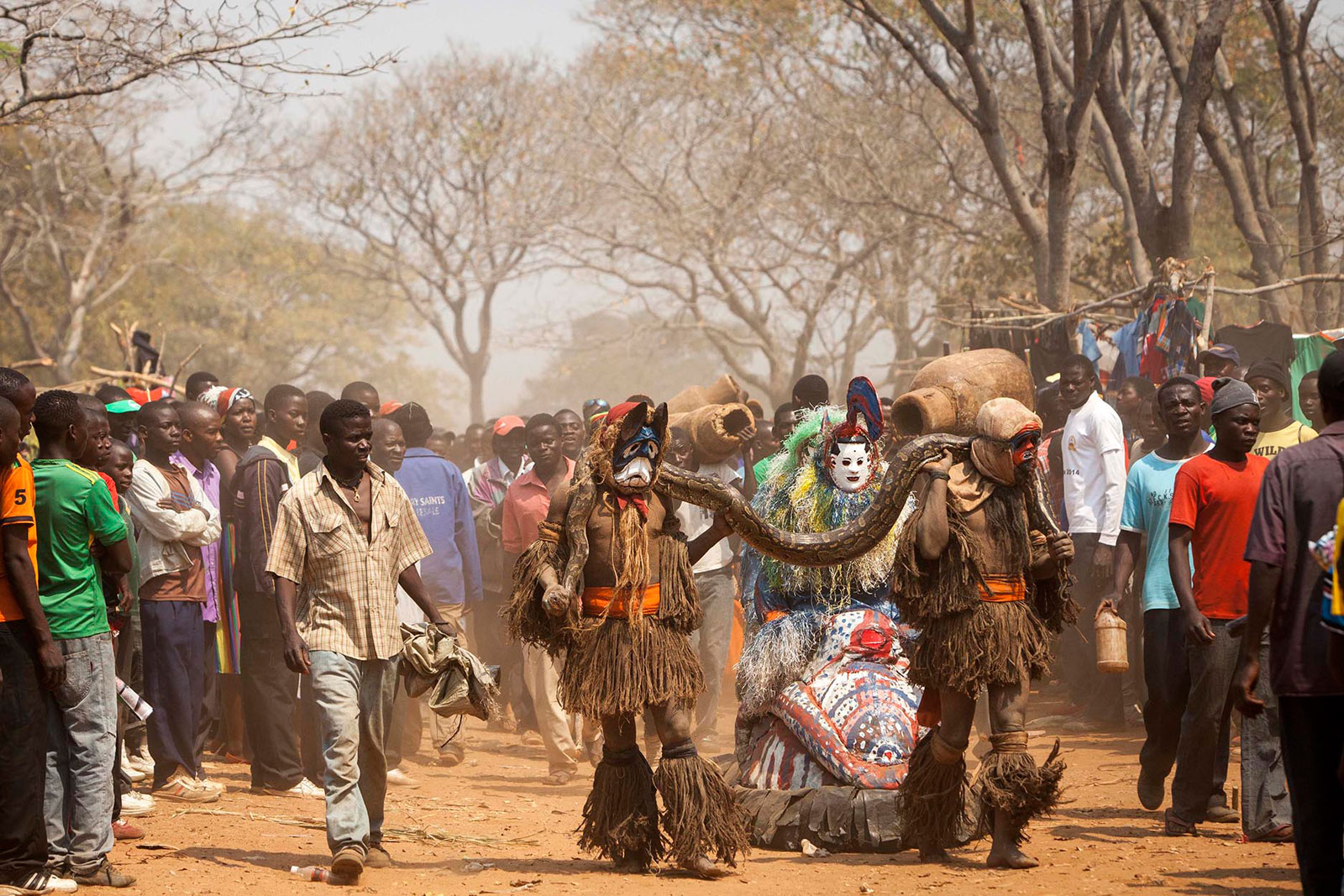
On the way to Zambia, as we neared the border, we came across three men walking down the road. Clad in dirty loincloths with their skin smeared with ash, they wore unelaborate but sinister Hannibal Lecter-like masks. And they each carried a panga and a big stick. Their body language was aggressive in the extreme, and there was nothing quirky or whimsical about them. I – jokingly – suggested to Andrew, who is usually a rather intrepid photographer, that he hop out of the car and take a pic. He refused, wisely realising it would be akin to walking up to a pride of lions for a whisker-sharp close-up. These were so obviously not nice guys – and they clearly were not real gule either – but they used the combination of fear and anonymity offered by the masks to commit crimes against the community. And the worst part is that many people, like those we chatted to in the coffee shop, don’t understand the difference. The ancestors would not be amused.
VIEW Gallery: The meaning of the masks
With special thanks to Father Claude Boucher (Chisale).
Contributors
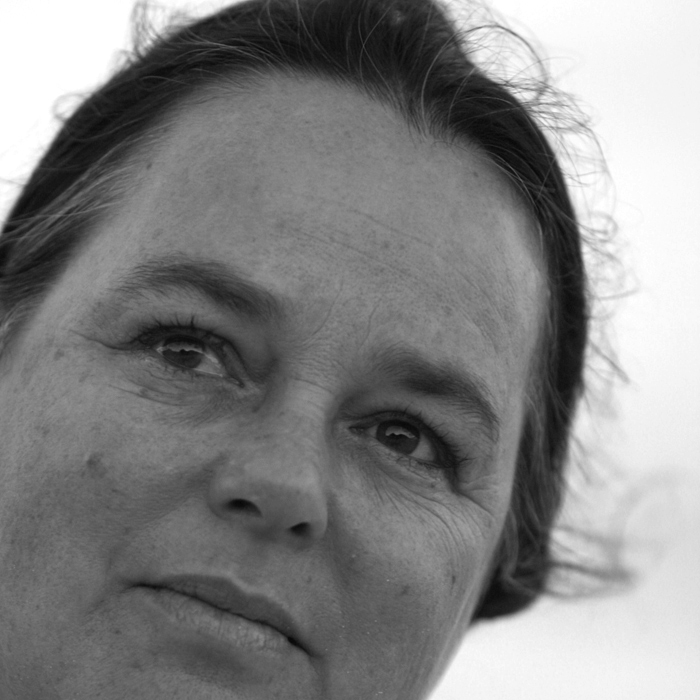 JENNIFER STERN is a Cape Town-based travel writer who has been trawling southern Africa for fantastic adventures, fascinating and little-known museums, awesome food, great coffee and interesting encounters since the previous century. She is fascinated by how people shape the world – and how the world shapes people, and she sees every new project as another adventure. But adventure, she believes, is not about risking your life. It’s risking your preconceptions about life. Jennifer’s latest adventure took her to Malawi and Zambia to learn more about the mysterious gule wamkulu or great dance.
JENNIFER STERN is a Cape Town-based travel writer who has been trawling southern Africa for fantastic adventures, fascinating and little-known museums, awesome food, great coffee and interesting encounters since the previous century. She is fascinated by how people shape the world – and how the world shapes people, and she sees every new project as another adventure. But adventure, she believes, is not about risking your life. It’s risking your preconceptions about life. Jennifer’s latest adventure took her to Malawi and Zambia to learn more about the mysterious gule wamkulu or great dance.
 ANDREW BRUKMAN is a photographer currently living and working in Cape Town. His roots are in documentary photography with strong influences from conceptual art. While on an adventurous road trip through southern and east Africa, Andrew spent time with Jennifer Stern to photograph Malawi and Zambia’s ‘gule wamkulu’. You can see more of Andrew’s work on his website, www.andrewbrukmnacreate.co.za.
ANDREW BRUKMAN is a photographer currently living and working in Cape Town. His roots are in documentary photography with strong influences from conceptual art. While on an adventurous road trip through southern and east Africa, Andrew spent time with Jennifer Stern to photograph Malawi and Zambia’s ‘gule wamkulu’. You can see more of Andrew’s work on his website, www.andrewbrukmnacreate.co.za.
To comment on this story: Login (or sign up) to our app here - it's a troll-free safe place 🙂.![]()
HOW TO GET THE MOST OUT OF AFRICA GEOGRAPHIC:
- Travel with us. Travel in Africa is about knowing when and where to go, and with whom. A few weeks too early / late and a few kilometres off course and you could miss the greatest show on Earth. And wouldn’t that be a pity? Browse our ready-made packages or answer a few questions to start planning your dream safari.
- Subscribe to our FREE newsletter / download our FREE app to enjoy the following benefits.
- Plan your safaris in remote parks protected by African Parks via our sister company https://ukuri.travel/ - safari camps for responsible travellers


